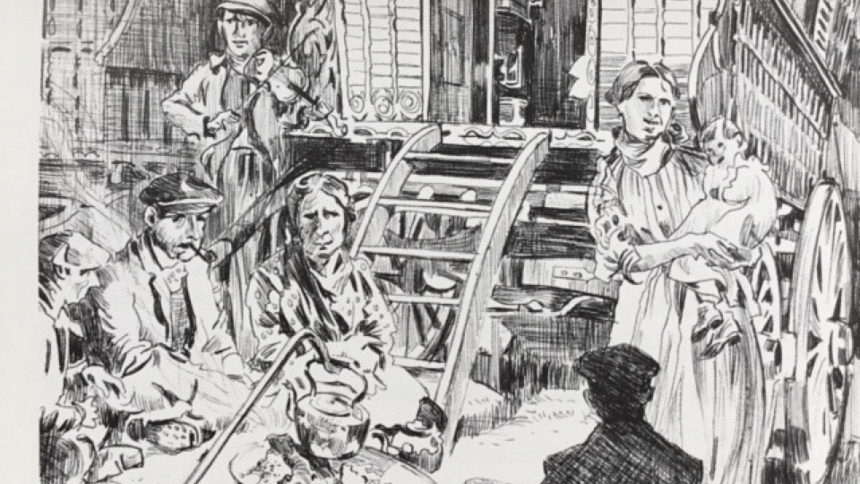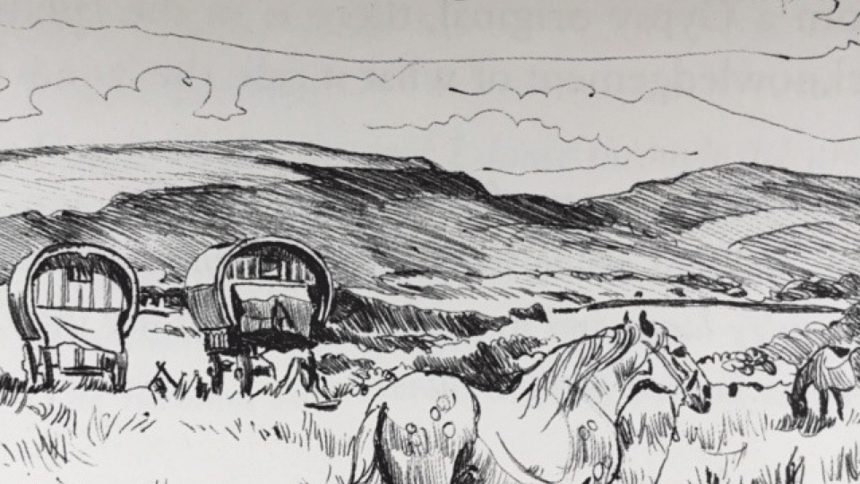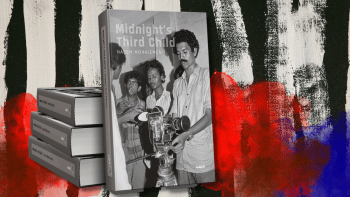The once and future bedes & ‘Gypsies?
Szilvia Reif, a student of mine from the (indicatively named) Gandhi School in Pècs, Hungary, wrote a poem that tells what it feels like to be a 'Gypsy (properly Roma).
Stanza by stanza she reviews what associations have accrued to the word "'Gypsy". Yes, it causes bad feelings. But also, more positively, a unique talent for music, for sticking together and sharing a unique language and for predicting the future.
Szilvia's complaint is that she is seen only in terms of her community, never as a person, an individual. While the Jews honour a number of brave goys who risked their lives by sheltering individual Jews during Hitler's Holocaust, the 'Gypsy poet Bari Károly tells me there is not a single known case of a gadže sheltering a Roma.
There are obvious differences between the land-based 'Gypsies in Europe and their river-based counterparts, the Bedes of Bengal, the names of the latter pretending to an origin among the Bedouin of Arabia rather than among the Egyptians. Whether the Bedes, as Rizia Rahman has it in her Bam Theke Bamla, are aboriginal to the delta and have a common origin with the 'Gypsies either there or among the lower occupational "castes" in north India, their lifestyles have a lot in common.

At least the Bedes have not suffered discrimination, as have their counterparts in Britain, for being "Asian". However, both have suffered persecution on account of their lifestyle, being vagrant, nomadic, outcasts to settled society, a threat to property owners. As Nazrul Islam observes in his play Baner Bede, the Bedes do not build homes since the whole world is their home.
Szilvia's images of her people accord closely with those elaborated in British literature. It is the Romantic era that provides the most romantic but also arguably realistic glimpse of the 'Gypsies. The most convincing portrait comes in Walter Scott's Guy Mannering. This novel might more accurately have been called, as it was in its dramatisation, Meg Merrilies, the name of the main protagonist, a 'Gypsy woman.
Scott was intimately familiar with the no-man's-land Border Country between Scotland and England where the 'Gypsies had first surfaced purporting and taken to be Kings of Egypt. Ben Jonson actually wrote a masque for the king and his courtiers to play at being 'Gypsies.
Scott's ballad, "The Gypsie Laddie", valued by Burns, catches the atmosphere of those origins when Johnny Faa persuades a rich lady to elope with him. While its plot differs, the tragic denouement that follows the social transgression in this ballad has much in common with the equally seminal and popular Bengali ballad on a Bede woman, Mahuya.
Meg, based on a real-life character, is one of the Faas, brooding over the action of the novel (that extends as far as India) and determining its outcome. Scott exposes the stereotypes to which a 'Gypsy is subjected–she is assumed to be stealing a child just as the 'Gypsy in DH Lawrence's The Virgin and the Gypsy is assumed to be bent on murdering the girl when actually both are on life-saving missions.
Fortune-telling, being able to foretell the future, is the most commonly observed occupation of the British 'Gypsies. Most presciently, Scott shows that the prophetic voice Meg speaks in is in fact practical insight based on an awareness of human nature, an ability to see into the heart of things. This image of a shrewd 'Gypsy female figure, strong and faithful, traduced and tragic, though unique in British literature, is widespread in Bangladeshi literature on the Bedes.

John Keats drew on Scott's portrait of Meg to write some lively verses celebrating her free, simple life in the country, but the countryman John Clare is the Romantic poet who knows that way of life best. Taught to fiddle by the 'Gypsies, he saw how the lifestyle that he shared with them was increasingly threatened by the enclosures of common land enacted by the rich.
In poems valuing his 'Gypsy friends for their common sense and shrewdness, Clare described them in one line as "a quiet, pilfering, unprotected race". It is that final adjective that strikes home, the more so because Clare himself, wishing only to be granted their way of life, ended up being shut away in an asylum.
William Hazlitt, the essayist who traversed every mile of the English countryside, castigates Wordsworth for having no sympathy for the beggarly 'Gypsies, in one poem regarding an unmoving group of them around a campfire as "torpid". Not only is Wordsworth himself "the prince of poetic idlers" but he fails to realise the lifestyle of the 'Gypsies is of even more value to humankind than is his poetry. They are "an everlasting source and reflection on the advantages and disadvantages of the progress of civilization".
Hazlitt's claim is part of an important tradition that highlights the shortcomings not only of a marginalized people but of the mainstream society that oppresses them. Most of the more sympathetic literary perceptions of the 'Gypsies come from writers who are themselves what Hazlitt calls "professional Bohemians", intellectuals who have grave reservations about the progressiveness of their own urban societies. In this respect, the pastoralist Jasim Uddin might come to Bangladeshi minds.

Matthew Arnold provides a useful hybrid word for such Bohemians in his poem, "The Scholar-Gypsy". Its story is based on that of a 17th century Oxford scholar who abandoned his studies to go and live with the 'Gypsies. One of the slogans of the English Revolution at that time highlighted the attraction: "Gypsy Liberty".
By the time DH Lawrence wrote his novella The Virgin and the Gypsy in the 20th century, in some ways a modern re-telling of Scott's "The Gypsy Laddie", he posited a stark opposition between the settled, respectable, deadening life of a vicarage and the unshackled life of a 'Gypsy wayfarer. The latter belongs to a more vital, pre-industrial England, uncrushed by industrial-scale war–or enervating domesticity.
Incidentally, Lawrence's well-known poem, "Snake", points to a distinctive aspect of the sub-caste of Bedes known as Sapures, snake-charmers, unafraid of snakes, able to cure snake-bite under the aegis of the Snake Goddess, Manasa Mangal. It is in this capacity that the Bedes are most frequently encountered in Bangladeshi literature.
Moreover, the Sapures live by the waters that in the subcontinent's oldest myths are seen as the province of the serpentine nagas (glimpsed in Tarashankar's novel Nagini Kanyar Kahini). For them, as for Lawrence, nagas are a principle of energy. This is in contradistinction to Judaeo-Christian Europe where they are generally perceived as a symbol of Evil.
Lawrence's poem shows him realizing what the Bedes and the 'Gypsies instinctively know: that instead of destroying Nature, killing snakes no less than raping the Earth for its resources and denuding the seas of fish on an industrial scale, we need to learn to live with it.
Alun Lewis's short story, "The Orange Grove", returns us to the 'Gypsies in India. The driver of a British Army truck is killed by nationalists and his officer must get the dead body back to base. The truck breaks down in a river miles from anywhere and the corpse is taken up by a party of 'Gypsies. The officer is in the hands of people living a migratory life stripped to its essentials. He doesn't know where they are going and maybe neither do they. To a pasture, perhaps, or a well.
In the time since Lewis wrote, the stranglehold of urban civilization in the tight little island of Britain has virtually done for the countryside and so for those who traditionally lived in it and off it. 'Gypsies and their fellow, often New Age, travellers are not welcome to settle and, if they try to camp by the roadside, are moved on.
One 'Gypsy in my native valley, Levi Smith, observed: "What I thinks to myself what they should do is put us all in some big field about a mile round and then drop a bomb on us". Bangladesh is now experiencing the urban stranglehold at a faster pace and the glittering city has sucked demoralised Bedes, among others, into its bars and brothels.

For those Bedes who remain on the Meghna the destined bomb is a time-bomb. Thanks to the corporate behemoth devouring Earth's resources right across the globe, greed trumping need, the Tibetan glaciers, like the polar ice-caps, are melting, as Bangladeshis know better than anybody, the Bay of Bengal rising.
And here is the irony. The great maw of urban consumer society is set fair to consume not only the ever more numerous rural outcastes but the select urban elites themselves in their gated communities. At their gates there will be a land first flooded and then dried up. The universally predominant lifestyle of conspicuous consumption is manifestly unsustainable.
One alternative may be to look again, sooner rather than later, and value, as our literatures have done, aspects of the subsistence lifestyle traditionally practised by the Bedes and 'Gypsies, whether aboriginal, nomadic or migrant. Getting by–individually and collectively–may be the most viable, perhaps only, way of getting on?
This article, based on John Drew's own monograph, Images of the 'Gypsies in English Literature, is indebted for its Bangladeshi prompts to Carmen Brandt's The Bedes of Bengal.
John Drew is a peripatetic poet, tutor and contributor to Star Literature.

 For all latest news, follow The Daily Star's Google News channel.
For all latest news, follow The Daily Star's Google News channel. 











Comments